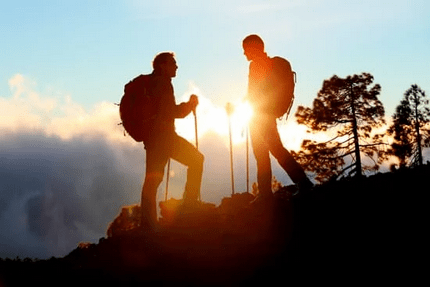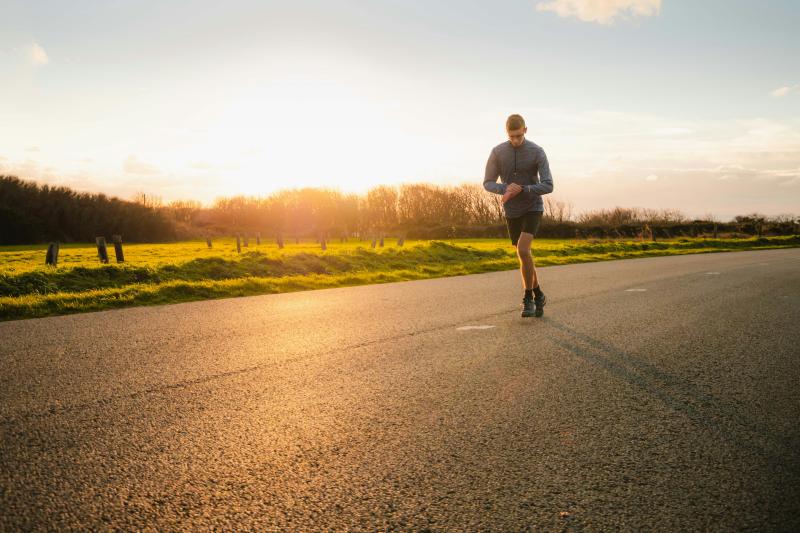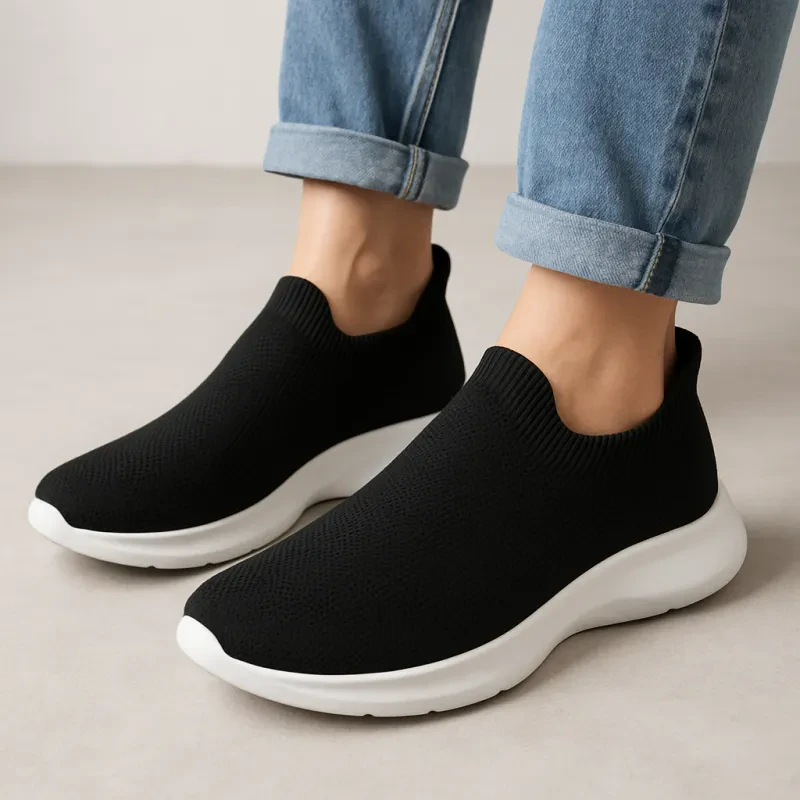When heading out for an outdoor adventure, choosing the right footwear is essential. Trail-ready sneakers provide the perfect mix of comfort, support, and durability needed to tackle different terrains. Whether hiking through rocky paths or strolling along forest trails, the right pair can make all the difference.

Outdoor enthusiasts often overlook the importance of sneaker features designed for various conditions. These features can include enhanced grip, waterproof materials, and breathable fabrics, making them ideal for an active lifestyle. Knowing what to look for can help anyone find the perfect fit for their adventures.
Getting the right sneakers not only boosts performance but also ensures safety and comfort. With so many options available, understanding how to choose and maintain sneakers is key. The following sections will explore important considerations and offer top recommendations for outdoor footwear.
Key Takeaways
- Trail-ready sneakers offer essential features for various outdoor terrains.
- Choosing the right fit and size improves comfort and performance.
- Proper care extends the life of outdoor sneakers.
Essential Features of Trail-Ready Sneakers

Trail-ready sneakers have unique features that make them suitable for outdoor adventures. Key elements include traction, durability, comfort, and weather resistance. These features help ensure a safe and enjoyable experience on trails.
Traction and Grip
Traction is vital for trail-ready sneakers. They often have specially designed outsoles made from rubber materials that provide excellent grip. This design allows for better stability on various surfaces, such as rocks, mud, or loose gravel.
Deep lugs are another important feature. These are the small, raised patterns on the sole that enhance grip. Sneakers with aggressive lugs will help the wearer maintain balance on uneven terrain, reducing the chance of slips and falls.
Durability and Materials
Durability is key when choosing sneakers for outdoor use. Trail-ready footwear typically uses tough materials like reinforced mesh and synthetic materials. These materials resist wear and tear better than regular sneakers.
Toe caps are another feature to consider. Many trail sneakers include rubber toe caps that protect the foot from impact with rocks or roots. This extra protection makes them more reliable for rugged conditions.
Comfort and Fit
Comfort greatly affects performance during outdoor activities. A good fit should leave enough room for the toes to move, but not so much that the foot slides around. Many trail sneakers include cushioned insoles that provide support during long hikes.
Some models come with additional features like adjustable laces or heel counters. This ensures a snug fit that can adapt to the wearer's foot shape. Breathable uppers also improve comfort by allowing air circulation, keeping feet cool.
Weather Resistance
Weather resistance is an important feature in trail-ready sneakers. Many shoes are designed with water-resistant or waterproof materials to protect against rain and wet trails. Gore-Tex and similar membranes are often used to keep feet dry while still allowing breathability.
In addition, sneakers may have quick-drying characteristics. This is essential for maintaining comfort if the shoes get wet. A good pair of trail sneakers will also have insulation features for colder weather, ensuring warmth during outdoor adventures.
Top Picks for Various Terrains
Choosing the right sneakers for different outdoor terrains is key to having a successful adventure. The right footwear can enhance comfort and safety, reducing the risk of injury on challenging paths. Here are some top choices for specific terrains.
Best for Rocky Trails
For rocky trails, sneakers need to provide stability and grip. Salomon X Ultra 3 GTX stands out in this category. It features a contoured design that supports the ankle, reducing the risk of twists. The Contagrip® outsole offers excellent traction on uneven surfaces.
Another great option is the Merrell Moab 2 Ventilator. It has a breathable mesh upper, which helps keep feet cool. The Vibram® outsole ensures durability and grip, making it easier to tackle rocky paths without slipping.
Best for Muddy Paths
Muddy paths require sneakers that excel in water drainage and traction. The Nike Terra Kiger 7 shines here, thanks to its quick-drying upper and multi-directional lugs. These features help the shoe maintain grip even in slick conditions.
The Brooks Cascadia 15 is another strong choice. It comes with a water-resistant mesh upper and a protective rock plate. The cushioning also provides comfort that lasts through muddy adventures, helping to keep feet dry and protected.
Best for Mixed Terrain
For those who encounter mixed terrain, adaptability is essential. The Hoka One One Challenger ATR 6 offers a balance of comfort and grip. Its lightweight design and thick cushioning make it suitable for various conditions.
Another excellent pick is the Asics Gel-Venture 8. This shoe features a ** rugged outsole** designed for trail traction. The Gel cushioning enhances comfort, making it a versatile option for different surfaces, from rocky paths to soft dirt.
Innovations in Sneaker Technology

Sneaker technology has evolved quickly to enhance outdoor experiences. Key areas of innovation include better cushioning, lightweight materials, and sustainable options. These features help users stay comfortable, supported, and environmentally conscious during their adventures.
Advancements in Cushioning
Modern sneakers now use advanced cushioning systems. Some brands have developed foam technologies that provide better shock absorption. This helps reduce strain on joints during long hikes or runs.
Responsive cushioning adapts to the user's weight and stride. This means that the shoes feel comfortable regardless of the surface. Some brands even include air or gel in their designs for extra support.
Breathable and Lightweight Designs
Breathable materials are essential for outdoor sneakers. They allow moisture to escape, keeping feet dry and comfortable during activities. Many shoes now incorporate mesh panels that improve ventilation.
Lightweight designs also play a vital role. They help reduce fatigue, making it easier to trek long distances. Materials like synthetic fibers and new weaving technologies make it possible to create durable yet lightweight footwear.
Eco-friendly and Sustainable Options
Sustainability is becoming a priority in sneaker design. Many companies now offer options made from recycled materials. This reduces waste and decreases the carbon footprint of production.
Some brands use bio-based materials that break down more easily in the environment. These innovations help outdoor enthusiasts feel good about their choices. It combines performance with a commitment to protecting nature.
How to Choose the Right Size and Fit for Your Adventure

Finding the right size and fit for trail sneakers is crucial for comfort during outdoor activities. Proper sizing helps prevent blisters and foot fatigue. The following details will guide anyone in selecting the best fit for their adventure.
Measuring Your Foot
To start, he or she should measure their feet to find the right size. He or she can do this by using a ruler or measuring tape.
- Stand on a flat surface.
- Place a piece of paper under the foot.
- Trace the outline of the foot.
- Measure from the heel to the longest toe.
It is important to measure both feet since one foot may be larger. Always use the larger measurement to choose sneaker size. This ensures a better fit.
Understanding Sneaker Sizing
Sneaker sizes can vary between brands. It is essential to refer to the brand’s specific sizing chart.
- US Shoe Sizes: This chart is based on standard widths: narrow (B), medium (D), and wide (2E).
- European Sizes: Sizes may be labeled in centimeters or other units.
When choosing sneakers, consider these factors:
- Length: Make sure there is about a thumb’s width of space between the toe and the shoe’s front.
- Width: If the sneaker feels tight across the foot, it may be too narrow.
Tips for Trying on Trail Sneakers
Trying on sneakers properly can lead to better choices. Here are tips for a successful fitting:
- Try sneakers at the end of the day when feet are slightly swollen for a more accurate fit.
- Wear the socks that will be used during the adventure. This makes the fit more comparable.
- Walk around the store to test both the fit and comfort.
Pay attention to areas that may rub or feel too loose. It’s important to bend and flex the shoes to ensure they provide adequate support for outdoor activities.
Maintenance and Care for Longevity

Taking care of sneakers for outdoor adventures is essential for their performance and lifespan. Proper cleaning, storage, and knowing when to replace them will help keep footwear in good shape.
Cleaning Techniques
To maintain sneakers, regular cleaning is key. After each use, gently brush off dirt and mud with a soft brush or cloth. For deeper cleaning, use warm water mixed with mild soap. Avoid harsh chemicals, as they can damage materials.
Remove insoles and laces before washing. Hand wash laces and insoles separately. Sneakers can be washed in a machine, but it's best to use a gentle cycle and place them in a laundry bag to prevent damage.
Always air dry sneakers after washing. Direct sunlight and heat can warp them, so keep them in a cool, dry area.
Storage and Preservation
Storing sneakers correctly helps prevent wear. Keep them in a cool, dry place away from direct sunlight. Use shoeboxes or dedicated storage to protect them from dust and potential damage.
Storing sneakers with silica gel packs can absorb moisture. This prevents mold and odor. Avoid stacking shoes, as this can squash them and ruin their shape.
Using shoe trees can maintain shape when not in use.
When to Replace Your Sneakers
Knowing when to replace sneakers is vital for safety and comfort. Generally, outdoor sneakers last about 300 to 500 miles of use, but this depends on terrain and frequency.
Signs that sneakers need replacement include worn-out soles, loss of cushioning, and visible damage. If the tread is smooth or the grip is compromised, it's time for new shoes.
Always pay attention to how shoes feel during use. If discomfort or pain arises, consider replacing them sooner. Regularly check sneakers to ensure they are in top condition for outdoor adventures.
Frequently Asked Questions

Choosing the right sneakers for outdoor adventures involves understanding essential features, fit, and the differences among various types of shoes. Several factors play a role in how well a sneaker performs on trails, including waterproofing and breathability.
What features are essential in choosing sneakers for hiking and trail running?
When selecting sneakers for hiking and trail running, traction and outsole grip are crucial. A sturdy shoe should have protective toe caps and reinforced sidewalls. Cushioning is important for comfort during long distances.
How important is waterproofing in outdoor adventure sneakers?
Waterproofing can be significant, especially in wet or muddy conditions. It helps keep feet dry and comfortable. However, some waterproof sneakers may sacrifice breathability, which is also important in warmer weather.
What is the difference between trail running shoes and regular running shoes?
Trail running shoes feature more aggressive tread patterns for better grip on uneven surfaces. They are typically sturdier and offer more protection against rocks and roots. Regular running shoes are made mainly for paved surfaces and may lack the same durability and traction.
Can you recommend the best sneakers for durability on rugged terrain?
Brands like Merrell, Salomon, and Altra offer excellent options for rugged terrain. The Merrell Moab and Salomon Speedcross are known for their durability and grip. Altra’s Lone Peak line is also popular among outdoor enthusiasts for its toughness.
How do I determine the fit and sizing for sneakers designed for outdoor activities?
To find the right fit, it’s best to try on sneakers with the socks intended for use. Shoes should have enough room for toe movement without slipping. Consider trying them on later in the day when feet are slightly swollen for a more accurate fit.
What are the top considerations for breathability and comfort in trail-ready footwear?
Breathable materials, like mesh, enhance airflow and wick away moisture. Look for cushioning that provides support without being too stiff. Good arch support and a snug fit help prevent blisters and soreness during prolonged use.



